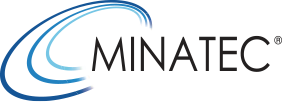News :
October 05 2020
A drone could speed up avalanche search and rescue
- Industry
- Innovation & Society
- News
- Research
In an avalanche, every minute counts. The longer a victim is buried under the snow, the less chance they have of surviving. CEA-Leti researchers equipped a drone with a network of antennas run by a radio-frequency circuit to help speed up search and rescue operations. The system utilizes algorithms to estimate which directions Bluetooth and […] >>
October 05 2020
Tomorrow’s window glass could be photochromic and photovoltaic
- News
- Research
Imagine window glass that changes in tint depending on sun exposure and produces electricity, too. Researchers at Irig and two international partners* are trying to develop just such a glass. A specially developed and patented naphthopyrone pigment was placed between two sheets of glass, allowing the researchers to obtain photochromic and photovoltaic effects on a […] >>
October 05 2020
Remote-control for micro-objects
- Education
- News
- Research
Victor Vieille, a Phelma alum who did his PhD at G2Elab and who is now conducting post-doc research with CNRS, is making a name for himself with research to magnetically remote-control micro and nano-objects. He also won a Grenoble-Alpes University Best Dissertation Award in the innovation category in 2020, has filed two patents, and is […] >>
July 06 2020
Life is gradually returning to normal on campus
- Life @ MINATEC
- MINATEC
- News
France began easing its Covid-19 restrictions almost two months ago. As we move into summer, life on the MINATEC campus is gradually returning to normal. Grenoble Institute of Technology-Phelma students will not return to campus until at least September. The school’s faculty and staff are back, however, but with a maximum of 40% of a […] >>
July 06 2020
Tomorrow’s spintronics could use 1,000 times less energy
- News
- Research
Researchers from Irig-CNRS and Thales published a breakthrough advance in spintronics in Nature. Rather than manipulating spin with a nanomagnet, they selected a ferroelectric material to do the job. Their novel approach uses 1,000 times less energy to write information. Like for ferromagnetic materials, the information stored is non-volatile (it is stored without the need […] >>



 Contact us
Contact us How to find us
How to find us







